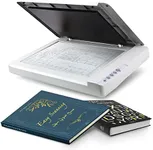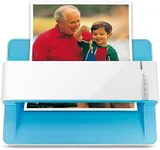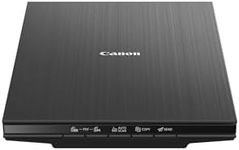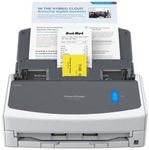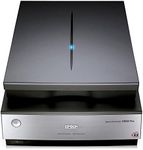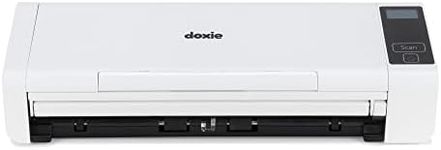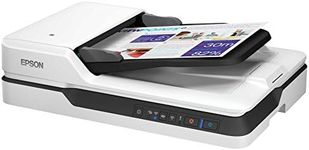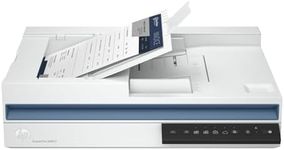Buying Guide for the Best Flatbed Scanners
Choosing the right flatbed scanner can be a bit overwhelming, but with the right information, you can find the perfect one for your needs. Flatbed scanners are versatile devices that can handle a variety of scanning tasks, from documents to photos and even 3D objects. To make an informed decision, it's important to understand the key specifications and how they relate to your specific requirements.ResolutionResolution refers to the number of dots per inch (DPI) that the scanner can capture. Higher resolution means more detail and clarity in the scanned image. If you need to scan high-quality photos or detailed documents, look for a scanner with a higher DPI, such as 1200 or 2400 DPI. For general document scanning, a lower DPI like 300 or 600 DPI is usually sufficient.
Scan SpeedScan speed indicates how quickly the scanner can process a page. This is usually measured in pages per minute (PPM) or seconds per page. Faster scan speeds are beneficial if you have a large volume of documents to scan regularly. If you only scan occasionally or in small batches, scan speed may be less critical.
Color DepthColor depth, measured in bits, determines the range of colors the scanner can capture. Higher color depth (such as 48-bit) provides more accurate and vibrant color reproduction, which is important for scanning photos and artwork. For standard document scanning, a lower color depth (24-bit) is typically adequate.
ConnectivityConnectivity options include USB, Wi-Fi, and Ethernet. USB is common and reliable for direct connection to a computer. Wi-Fi and Ethernet allow for wireless and networked scanning, which can be convenient for multiple users or if you want to place the scanner away from your computer. Choose the connectivity option that best fits your setup and workflow.
Software CompatibilitySoftware compatibility refers to the scanner's ability to work with different operating systems and scanning software. Ensure the scanner is compatible with your computer's operating system (Windows, macOS, etc.) and check if it includes or supports software that meets your scanning needs, such as OCR (Optical Character Recognition) for text recognition.
Size and PortabilityThe physical size and portability of the scanner can be important depending on your workspace and how often you need to move it. Larger scanners may offer more features and better performance but require more space. Compact and portable scanners are easier to store and transport but may have fewer features. Consider your available space and how often you need to move the scanner.
Document HandlingDocument handling features include automatic document feeders (ADF) and flatbed scanning. ADFs are useful for scanning multiple pages quickly, while flatbed scanning is ideal for delicate items, photos, and thick documents. If you frequently scan multi-page documents, an ADF can save time. For occasional scanning or special items, a flatbed scanner is more versatile.


